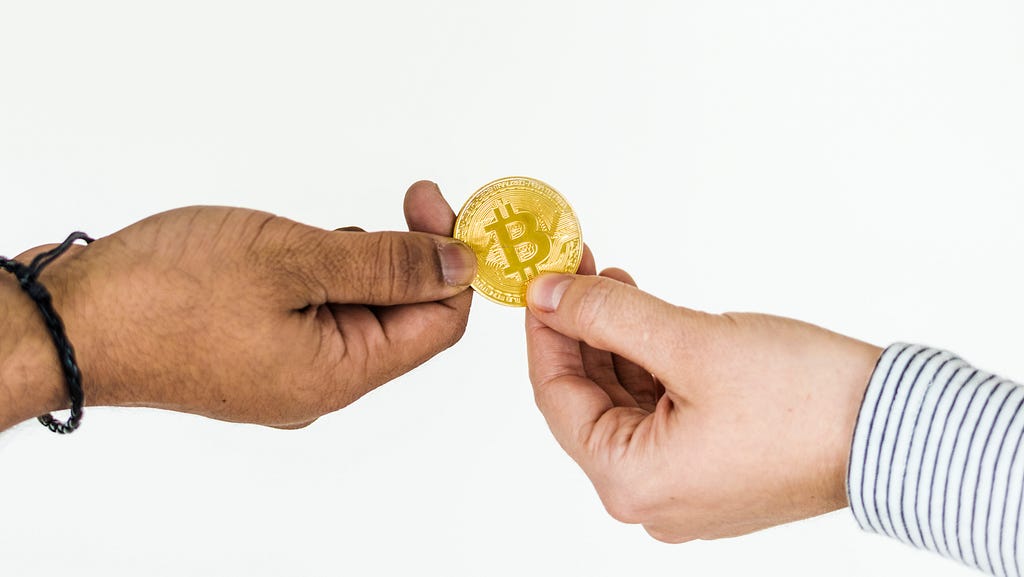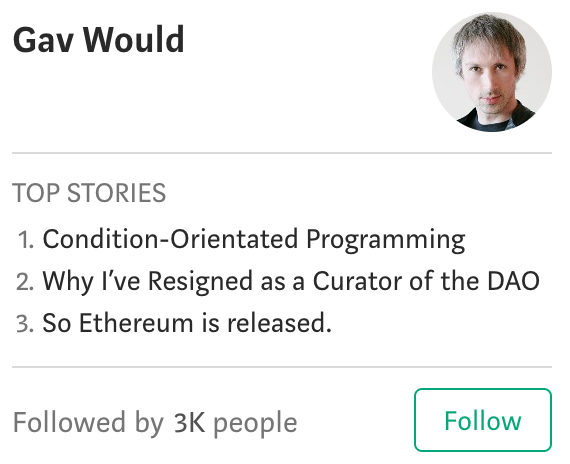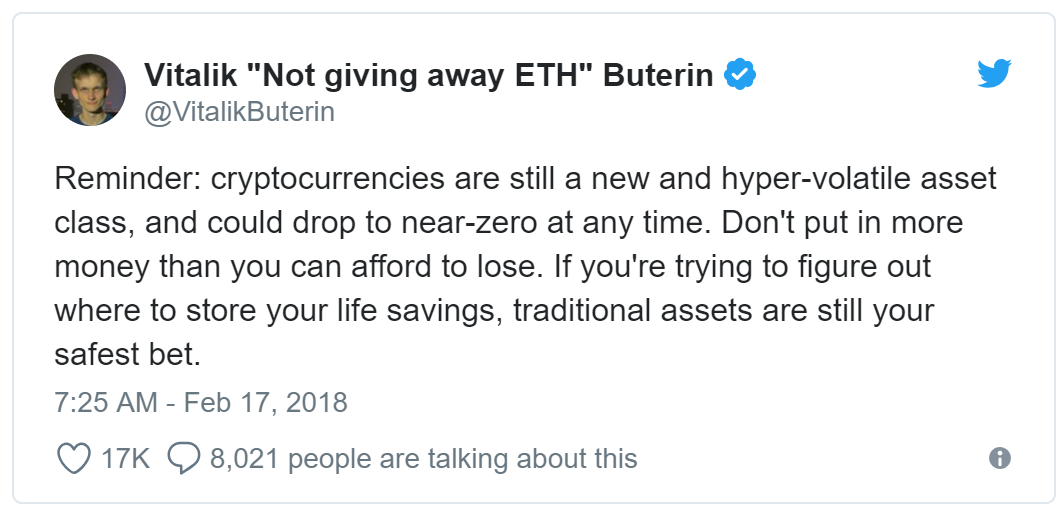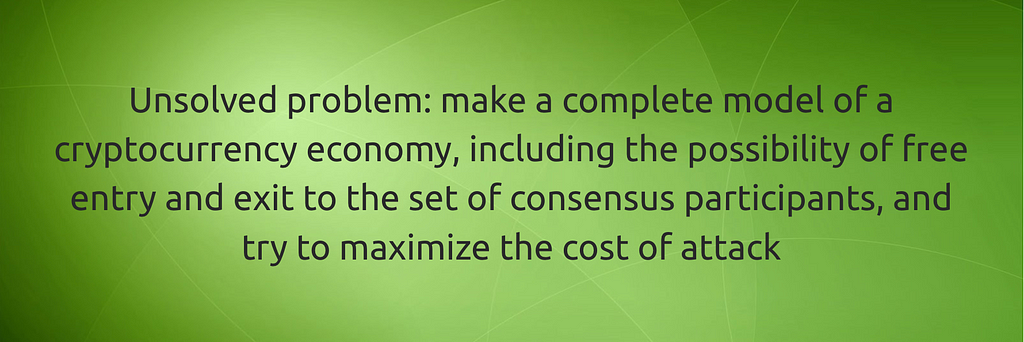Latest news about Bitcoin and all cryptocurrencies. Your daily crypto news habit.

(This is Part 1 of a 2-part series on The (Material) Crypto Economy. We’ll publish Part 2 when we get 100 claps on Part 1 — so please don’t be stingy with applause — it keeps us motivated.)
The word “cryptonomics” usually conjures up thoughts of Bitcoin or other crypto-financial markets, and the claims by many crypto-developers that crypto instruments represent entirely new modes of economic organization.
Common analytical starting points for cryptonomics are game theoretical, statistical, and/or other formal logics and proofs for why rational people invest in purely “digital assets” like Bitcoin, a collection of CryptoKitties, one’s digital identity, reputation, and so on.
But as everyone knows, there has to be more to crypto than just assumption-constrained or faith-based belief in ever-higher valuation.
 What ordinary people want to know when they come to crypto is how it works in a material sense. What can I do — materially, concretely, tangibly — to earn crypto? How do I get material possession of crypto? Where will I keep it safe — in a very real material sense.
What ordinary people want to know when they come to crypto is how it works in a material sense. What can I do — materially, concretely, tangibly — to earn crypto? How do I get material possession of crypto? Where will I keep it safe — in a very real material sense.
These aren’t naïve questions. They go to the heart of crypto’s full potential, and crypto’s biggest scaling mistakes to date.
There’s a reason why crypto iconography is so material heavy — showing gold Bitcoins passing hands between smiling bitcoiners. There’s a reason it’s called Bit-coin, as opposed to Bit-note. There’s a reason crypto best practices include material storage of crypto assets in physical vaults, moveable Ledger Nanos, or, at least, in material paper form.
That’s the way the human mind works. Instead of trying to engineer around it, crypto would profit from capitalizing on this basic human need for materiality.
Our thirst for materiality is not a bug in the system, it’s a feature of human economic systems.
Today’s crypto has a lot of different approaches for how to integrate with existing material economies, but there isn’t a clearly dominant approach.
After a decade of development, the idea that crypto is still “finding its way” in the material world is not acceptable.
No, crypto’s got a big problem. And it needs to solve this problem ASAP.
1. Thesis
(A) Whether individuals or institutional investors, newcomers don’t want to wade through maths, code, or cryptoslang to learn about the promise of crypto in everyday material terms.(B) People want to know the easiest way for everyone to earn crypto — not just a privileged few.(C ) The speed and ultimate success of crypto’s global adoption hinges on crypto’s ability to articulate (A) & (B).This article answers these central utility questions and challenges crypto thought leaders to do the same. These are today’s most important crypto questions.
2. Crypto Economic Theory Today
Most introductions to crypto markets by crypto insiders dive headfirst into extremely abstract transactional pools (“money markets,” “identity markets,” “oracle markets,” “data markets,” intra-crypto governance mechanism design, etc.).
But analysis of discrete markets or bounded organizational logics does not capture the complexity of the “crypto economy” as such. Neither do studies of exchange-based “markets” (Coinbase, Binance, etc.) or various ongoing crypto-enterprise integrations.
To be useful, a crypto economic theory must go beyond valuations and prognostications.
Good crypto economic theories unlock new value and utility propositions that not even the crypto developers have been able to see.
3. Elements of a Good Crypto Econ Theory
A crypto economic theory must explain:
(a) why people adopt crypto;(b) what are crypto’s competitive advantages vis-a-vis existing technologies and processes;(c) what are the concrete utility and value propositions (supply) that can spur maximum demand for given crypto tools from the largest number of people.
One of the best intros to “crypto econ theory” is by Ethereum co-founder Gavin Wood (aka Gav Would) published here on Medium in December 2015. It’s called:
It’s a smart piece written by a leading crypto theorist. As such, it serves as an illustration of both good and bad “cryptonomic/cryptolegal theory.”
Here’s how.
4. Ethereum as a Sample Cryptonomy
Wood identifies three key “pillars” to what he describes as the “crypto-law ecosystem.” They include:
- Identity (1)
- Assets (n)
- Data (inf)
From just these three pillars, Wood generates a rich map of the crypto economy that is possible on the Ethereum platform. And the vision is really breathtaking in scope. It’s more audacious than anything we’ve come across since, with the possible exception of IOTA materials.
The key insight of Wood’s piece is that different blockchain architectures finally allow us to track, analyze, and better align the infinite potential transactional permutations between individual rights holders (what Wood calls “Identity,” and which can include individuals, corporations, NGOs, etc.) vis-a-vis material & immaterial assets.
Given that it’s nearly 3 years old, it’s an “oldie” by crypto standards, but a goodie.
Like all true genius, “So Ethereum is released.” doesn’t need pomp or flair. It’s an understated bit of analysis. As a 9-minute intro to the potential of the crypto-economy — along with a creative intro to law’s place in crypto transactional spaces — it simply cannot be topped.
Well done, Gav!
From the perspective of a well-educated non-crypto person, there’s only one problem with Wood’s analysis: it’s extremely abstract.
5. Abstract Cryptonomics = Bad Economics
We’re mindful that an “abstractness” critique from CleanApp Foundation will look disingenuous, given that so much of our work is also frequently critiqued as abstract. But the reason we’re so comfortable projecting this critique is because we agree with our critics:
It’s not our readers’ (or audience’s or market’s) job to get familiar with cryptoslang; quite the opposite, crypto’s success hinges on its ability to cut through needless jargon and abstraction.
It’s time to speak plainly and put forth concrete material value propositions that will allow normal people to put bread on the dinner table by earning crypto.
6. Abstraction Occludes Utility
You can’t buy bread with “de novo conceptions of CryptoLaw” or with “Liberal Radicalism” or with new voting and social contract theories (see, e.g., Buterin, Hitzig, Weyl).
Nor can you (consistently) buy bread with speculative “earnings” from crypto trading. Transaction fees alone would eat up your bread budget.
Moreover, when leading crypto theorists expressly warn you to store your bread money in “traditional assets,” you know something’s up.
The only way to actually put “crypto mining” and “crypto earning” bread on the maximum number of tables is to understand the limitations of today’s crypto (material) economy, and the potential of tomorrow’s crypto-material-economy.
7. Tragedy of Crypto Commons
Many crypto development teams are working hard to unlock different ways for regular folks to earn crypto — from traditional crypto mining pools (subleasing your computing power), to Plasma/Sia models of decentralized cloud storage (subleasing your hard drive), to novel energy markets (subleasing your solar panels, generators, and batteries), and so on.
All of these efforts to democratize the value and utility gains from crypto should be applauded and supported.
But the core premise of our argument — deployment of crypto-economic processes that permit maximum numbers of regular people to easily earn easily-convertible crypto — seems to be missing from mainstream discourse on global crypto adoption, crypto scaling, and crypto-enabled governance transformation.
General commitment to economic development and economic empowerment is there — between the lines, in the margins—but concrete earning utility maximization theories, processes, and implementations don’t appear to be central developmental agenda items.Why not?
Perhaps when everyone assumes someone else is working to develop a crypto-bread machine, then nobody is incentivized to develop a crypto-bread machine — the tragedy of the crypto commons.
8. Is Ideology to Blame?
Buterin has made clear that crypto must accomplish “something actually meaningful for society” or else he’d quit; IOTA Foundation is now nearly synonymous with material crypto-utility propositions that have potential to significantly raise individual and social welfare.
But neither Ethereum nor IOTA teach ordinary folks how to do socially-useful work to earn a little crypto-bread on the side via processes that expressly and objectively maximize individual and social utility.
Is “maximization of individual utility” too coercive? Does “maximization of social utility” sound too prescriptive and authoritarian?
If crypto-ideological barriers are what’s getting in the way of global scaling that will make everyone better off, then it might be time for new ideological moorings.
Ideology should not be impeding crypto’s steady march towards global domination.It’s in this spirit that we challenge everyone to suspend their assumptions about how crypto markets work (or are supposed to work) and to undertake a thought experiment to build a material crypto economy from scratch.
We’re not alone in this call. This is the same thing that Wood, Buterin, EOS, IOTA, and many others are doing and calling for. A slide from Buterin’s recent roadshow presentation helps drive the point home:
Many people interpret that call to refer to “a complete [formal mathematical-algorithmic-econometric-legal-etc.] model” of a “cryptocurrency economy.”
We interpret this call far more broadly. And we challenge everyone to do so as well.The payoff is a much better understanding of how the world actually works, and crypto’s place in it.
The (Material) Crypto Economy was originally published in Hacker Noon on Medium, where people are continuing the conversation by highlighting and responding to this story.
Disclaimer
The views and opinions expressed in this article are solely those of the authors and do not reflect the views of Bitcoin Insider. Every investment and trading move involves risk - this is especially true for cryptocurrencies given their volatility. We strongly advise our readers to conduct their own research when making a decision.








